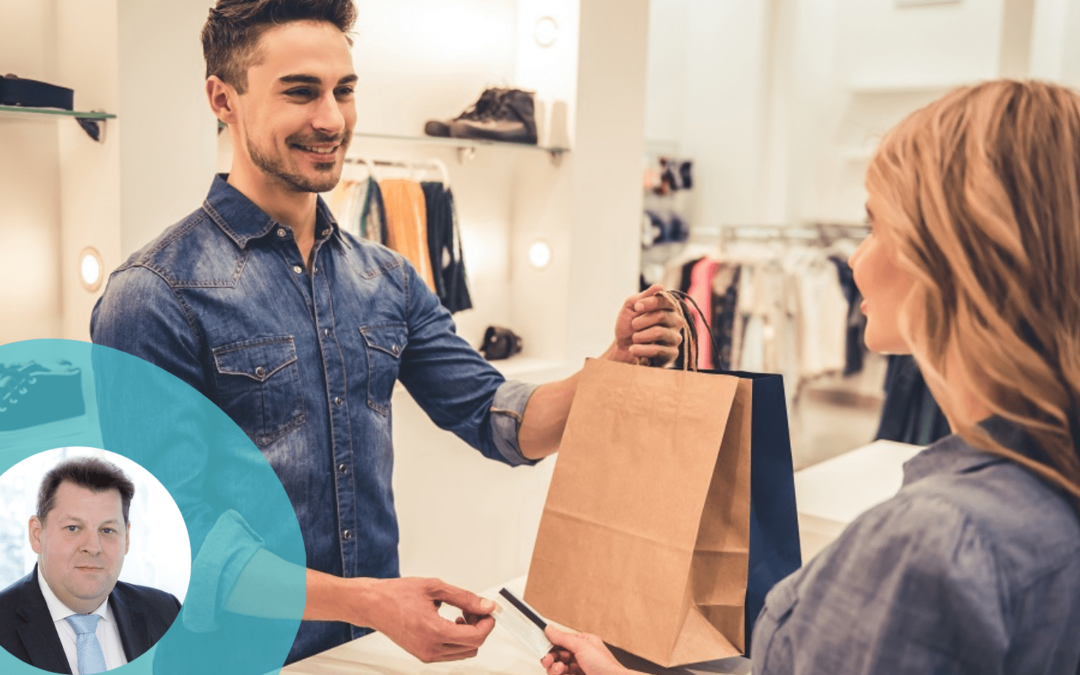To compete today, retailers must develop new and innovative ways to engage their customers and generate more loyalty. Fortunately, the shift toward diverse checkout options and digital receipts has fostered new touch points for retailers looking to make a memorable impact.
In fact, 53% of shoppers under 45 years old prefer self-checkout options, and 89% of consumers of any age like the idea of a digital receipt. Retailers can take advantage of these popular touch points to connect with and engage shoppers in three ways.
1. Developing a feedback loop.
The most effective way to strengthen the customer experience is to elicit feedback. Yet, since customers are often in a rush, it can be challenging to gather valuable feedback.
Fortunately, the point of sale is a great place to receive input. Each transaction should be paired with a single question that the shopper can answer while the cashier is ringing up their purchases or while the PIN pad is accepting the credit card. The question can inquire about customer actions, brand preferences, loyalty program participation, pricing or other facets of the customer experience.
The one-question approach keeps the customer from being overwhelmed by inquiries and increases the likelihood of a response. Yet if response rates aren’t high enough, retailers can try offering personalized incentives like 10% off a product the shopper frequently buys as a reward for answering the prompt.
What’s more, by incorporating AI into this feedback process, retailers can tailor each question to the individual shopper and their basket. Instead of a generic question like, “Did you find everything you were looking for?” the retailer can ask, “Of the last two brands of peanut butter you’ve purchased, which did you like more?” The personalized questions and resulting feedback can be used to improve product assortments, stocking, pricing, loyalty offerings and more.
By tailoring the right questions to the right person, retailers can ensure every response is valuable. The point of sale is a great place for retailers to seek feedback that will enhance the customer experience throughout the store.
2. Offering new engagement opportunities.
Placing enticing magazines and candy by the checkout counter is a long-standing retail strategy designed to increase basket sizes with impulse purchases. This traditional approach can be strengthened with AI. Today, retailers can invest in stronger last-minute strategies that not only increase basket sizes but also loyalty and engagement at the point of sale, both online and in-store.
The first opportunity involves the loyalty program. By integrating the loyalty program into omnichannel points of sale, retailers can connect with shoppers on a personalized level. For example, if a shopper loaded a list into their loyalty app and forgot something, the cashier or point-of-sale kiosk can share a reminder. Or, if a shopper forgets about a coupon they clipped on the loyalty program website, they should be reminded at the point of sale. These helpful AI-driven add-ons to the checkout experience can ensure the shopper leaves satisfied and eager to return for their next shopping journey. By connecting online and in-store loyalty programs via point of sale touch points, retailers can delight shoppers whenever and wherever they check out.
Similarly, retailers can add lottery capabilities to their point-of-sale touch points. Previously, customers had to use a second machine after checkout, which delayed the shopping experience. Now, retailers can add these capabilities to self-checkout kiosks and mobile checkout options, enhancing efficiency in purchasing tickets and making it easier for retailers to grow their basket size.
By enhancing the point of sale, retailers are able to simplify the customer’s shopping journey while increasing revenue, customer satisfaction and loyalty.
3. Increasing sustainability and functionality.
Another way to enhance point-of-sale and post-purchase touch points is to offer digital receipts. This sustainable alternative is good for the environment and saves the retailer money on printing, but those aren’t the only benefits. Digital receipts also draw shoppers to an app or website. Then, when the shoppers sign in to these touch points to view their receipts, they can receive personalized recommendations, promotions and more. These offerings are tailored based on the information the shopper shares with the loyalty program and can include allergies, dietary preferences and more.
For example, imagine a shopper frequently purchased a seasonal beverage from a coffee shop last summer. As summer comes around again, the shopper may have forgotten which beverage they loved. With a digital receipt system, the shopper can search their past purchases and find their favorite summer order, encouraging them to return to the coffee shop again this year.
Furthermore, when the shopper signs in to find this information, they might find a coupon recommending that they try a new seasonal pastry that pairs well with their preferred beverage. This can increase basket sizes and showcase the value of being a repeat customer.
This personalized outreach, made easily accessible by digital receipts, delights shoppers and improves profitability for retailers.
Connecting Throughout the Shopping Journey
Customer loyalty can be won or lost at any stage of the shopping experience. By investing in ways to enhance the checkout counter and the digital receipt, retailers are showcasing their commitment to the shopper’s needs, feedback and efficiency. Every stage of the customer experience matters – even the touch point that they meet on their way out the door.
Michael Jaszczyk is the CEO of GK Americas, where he works to maintain and enhance the company’s global reputation as the supplier of one of the most innovative and complete retail software platforms and suite of services. Jaszczyk has been a part of GK for more than 12 years, previously serving as CTO. He draws on an extensive wealth of experience, both in software development for the retail sector and as a manager at international IT companies, including MCRL AG, Pironet AG and SA2 Retail AG. GK Software provides a future-proof foundation to support retailers’ customer engagement strategies.





